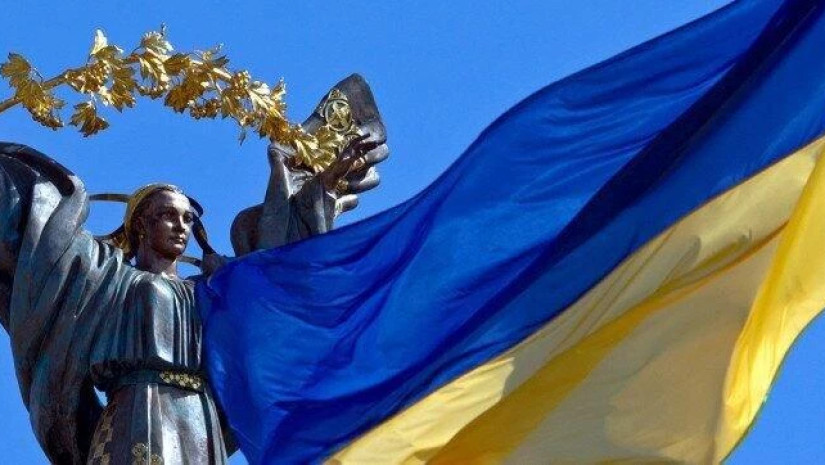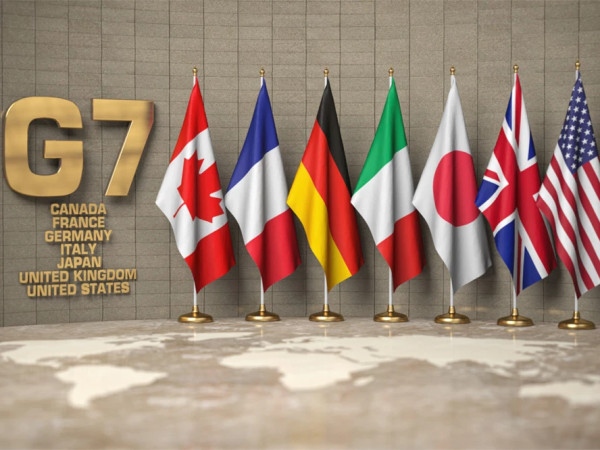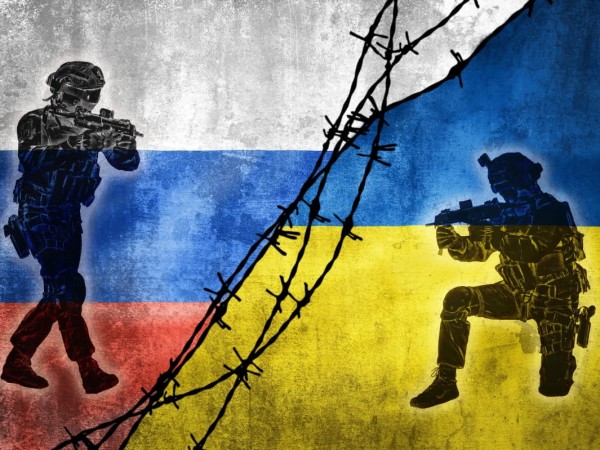PMCG publishes a Special Issue following the Russia’s invasion of Ukraine. The provides an overview of the most important sanctions that have been imposed on Russia following its invasion of Ukraine on 24 February 2022 and an assessment of the potential effectiveness of those sanctions.
The sanctions imposed on Russia are unprecedented in their scale and speed. In total, including restrictions already been in place before the 2022 invasion, Russia has been the subject of over 5,000 restrictive measures enacted by 41 countries, which makes it the world’s most sanctioned country, an unwanted accolade previously held by Iran1. Most sanctions have come from Western countries and their political allies, though even traditionally neutral Switzerland as well as Singapore and Taiwan have joined in. Moreover, private companies from all around the world have been pulling back their activities in Russia, demonstrating an exceptionally united global response.
To begin with, the scale of global cooperation alone would have been enough for the first wave of sanctions to cause considerable damage. Indeed, the impact on the Russian economy is already being felt, including the weakening of the Russian Rouble which has crashed to a record low against the US Dollar and Euro, the shutdown of the Russian stock market, a collapse in the value of Russian companies traded on foreign stock exchanges, and runs on Russian banks. Moreover, as Russia has been denied access to its foreign currency reserves, credit agencies like Fitch3 and S&P have issued warnings about the threat of Russia defaulting and downgraded Russia’s crediting rate accordingly. Such a default could have serious and long-term consequences for Russia, as a failure to pay its debts would limit Russia’s financing options and increase its borrowing costs.
According to the latest OECD estimates5, which are based on the assumption that the market shocks seen in the first two weeks of the conflict will persist for at least one year, Russia will face a deep recession with its output declining by over 10%. This is 12.7 percentage points lower compared to the previous estimates made before the war that projected 2.7% growth. To give some perspective here, during the COVID-19-related recession in 2020, Russia’s economy declined by 3%.
Nevertheless, it is still extremely difficult to assess the impact of the sanctions, as currently, the sanctions lack one common, clearly defined and effective strategy behind them and it is ambiguous how long the sanctions will remain in place. It remains unsettled whether the goal is to shift public opinion within Russia against its government or to just punish Russia and its citizens without reservation, to exhaust the Russian economy to the point that Russia has to stop the war6 or to change the whole regime. Moreover, if the sanctions are to be effective in achieving one common goal, it would be more effective to split this goal into more specific objectives and accordingly, to link each sanction to one of these particular objectives.
Alongside the ambiguity surrounding the existing sanctions, the absence of large-scale energy restrictions has been notable. Massive energy sales and revenues are Russia’s most important economic shield. On the contrary, many countries are highly dependant on Russian energy imports, especially the EU countries. In response to the current situation, the EU issued action plans (“REPowerEU”and 10-Point Action plan) for decreasing its dependancy on Russian fossil fuels, but as those plans can come into force only in the future years, currently, complete ban of energy imports from Russia to the EU is less likely. But besides that, there is a room for addressing energy-related exemptions that can be found in many of the wide-ranging sanctions that have been imposed by the West, with loopholes allowing Russia to avoid or limit their impact. Thus, considering this lack of clarity and the exceptions apparently being made, the possibility that Russia will find ways to mitigate the impact of the sanctions cannot be excluded. If so, their effectiveness will be quite limited, especially if currently present tense political climate and public pressure will be faded and immediate shock effects that have already hit the Russian economy will be dissolved.
PMCG tried to assess the effectiveness of some of the most important sanctions to have been imposed, accounting for their: 1. Severity (scale and unexpectedness, and having the ability to cause an immediate shock and disturbance); 2. Room for expansion (possibilities for further expansion of sanctions) 3. Difficulty of avoidance (the alternatives that Russia can find to those restrictions); and 4. Impact time lag (the length of time needed for the given sanction to impact the economy). Accordingly, we assessed the overall effectiveness of the sanctions, outlining the expected harm that they could bring to the Russian economy.
SWIFT ban for seven Russian banks, which were chosen based on their connections to the state and the implicit connection to the war (OverallEffectiveness - Moderate Overall Effectiveness )
Cutting Russian banks from SWIFT marked an unprecedented measure against an economy of Russia’s scale and it has even been referred to as a “nuclear option” by many authorities and reputable newspapers. The initial effect of this sanction can be assessed as severe. However, it is important to understand that the ban on SWIFT does not imply that the banks excluded from the system cannot still proceed with transactions with other banks. It is rather the case that those transactions are not likely to be as secure and could end up being slower and costing more. Such additional costs and delays ultimately means the cutting of revenues for the Russian government. Importantly though, the ban applies to only seven banks and does not include either Sberbank (Russia’s largest bank) or Gazprombank, which are the main channels for payments for Russian oil and gas. Thus, there is still considerable scope for expanding this sanction by including more banks or extending the ban to the whole country, as has been requested by some European leaders. In the long term, in order to mitigate the effects of this sanction, the excluded Russian banks might route payments through other banks willing to process transactions on their behalf, like other Russian banks with which banned banks can connect via Russia’s own financial transfer system (SPFS) or banks in China, which has its own payments system (CIPS). However, at the same time, Russia’s capacity to adjust to the SWIFT ban is severely limited by the additional sanctions being imposed on the Russian financial system, which is still heavily reliant on Western markets. So, overall effectiveness can be assessed as moderate.
Banning the Central Bank of Russia (CBR)’s access to its foreign reserves held in western banks and a partial ban on transactions with the CBR (High Overall Effectiveness)
Freezing foreign reserves implies depriving Russia of a tool to protect its economy against sanctions and supporting the value of the Russian Rouble. The CBR holds a total of US$643bn in foreign reserves10, however, a significant proportion of this money is held in banks of Western countries which have sanctioned the CBR and are largely denominated in the USD and EUR. A significant amount of reserves, 21.7%, as for June 202111, was held in the form of gold, but Western countries have also banned the purchase of gold from Russia. However, 13% of reserves were held in Chinese yuan and the CBR can freely use this money. Moreover, energy-related payments through the CBR are exempt from sanctions12, meaning that Russia still receives an inflow of foreign currency. As its own ability to intervene in currency markets has been limited, the CBR ordered to sale of the foreign currency revenues of Russian exporting companies, which include energy giants like Gazprom and Rosneft, and converted them into roubles13. To sum up, the immediate impact of this unprecedented sanction is severe and limits Russia’s ability to deal with inflation and bank runs. Though Russia still has some options to pave out its way to limit the effectiveness of this sanction, for now, putting Russia at risk of credit default implies that there could also be delayed, but powerful effects in the future.
Individual measures including travel bans and the freezing of assets imposed on hundreds of private individuals and some entities (Low Overall Effectiveness)
These measures which apply to hundreds of Russian elite close to Putin and Putin himself, Kremlin leaders, oligarchs, and their families,constrain their ability to conduct business abroad, to keep their assets, and open accounts in reputable institutions. However, the visibility of the assets held by most of the Russian oligarchs is limited as much of their wealth is hidden in offshore companies whose true ownership is hard to determine. Indeed, sanctioning Putin himself is largely symbolic, as his real wealth is believed to be well-covered and has not been tracked so far.
Suspension of the certification of the Nord Stream 2 gas project (Low Overall Effectiveness)
Nord Stream 2 was completed in 2021, but was not functioning or generating any revenues to Russia as the project was still awaiting certification when the war began. Germany temporarily suspended the certification by withdrawing a key document, namely the assessment of the security of energy supplies15. The new version of the document, which should be submitted within three months, is expected to take into account Russia’s military invasion of Ukraine and to declare the pipeline as posing risks to energy security, thereby not attaining certification. However, it is still important for the EU to apply more concrete sanction that will guarantee that the pipeline will not be used for the purpose it was initially built for. Building the pipeline that would for provide an alternative way of selling Russian gas to Europe instead of land-based pipelines passing through Ukraine and Poland, which are accordingly receiving transit fees from Russia, instead of decreasing EU’s dependancy on Russian gas, was always highly controversial and dangerous decision, even before the invasion on February 24, 2022.
Bans on exports of strategic items to Russia (technological, pharmaceutical and military), including vital high-tech products like semiconductors (Moderate Overall Effectiveness)
The bans have mainly targeted the Russian defense, aviation, and maritime sectors, but have included many exemptions for exports of household electronics, consumer communications devices (cellphones), and aircraft parts necessary for flight safety, as long as they are not delivered to entities that support the Russian government and military. Russia purchases most of its microchips from China, but it can produce only relatively low-end chips and not the high-end chips necessary for advanced weapons, high-end smartphones, and technologies like 5G, robotics, and AI17. Meanwhile, the US, having a relatively small base of semiconductor manufacturing, is the world leader in the field of semiconductor design and chip patents, so the impact of those sanctions hinges on the US’s ability to oblige companies that make tech items in other countries with US tools to seek licenses from the US before shipping to Russia (known as the foreign direct product (FDP) rule). What
further strengthens the impact of this sanction is the multilateral cooperation around the export bans, as alongside Western countries, Singapore, Japan, and Taiwan – all three being major producers of high-tech products – have all joined the sanctions. Thus, making overall effectiveness of those type of sanctions moderate.
Ban on oil and energy imports by the US and by the UK, which will phase out imports of Russian oil and oil products by the end of 2022 (Low Overall Effectiveness)
For the US and the UK, Russia is a relatively small oil source (8% respectively for each country) and purchases thereof make only a minor contribution to Russia’s massive oil earnings. However, bans from the US and UK might send a powerful message to other countries and in particular EU foreign ministers who are still disagreeing on the matter of oil sanctions against Russia.
Airport and airspace bans for Russian carriers (Moderate Overall Effectiveness)
Russia’s airlines are currently flying almost exclusively domestically, As Russia has also responded by banning 36 countries from flying through its skies, overall considerable losses will be received by the Russian air transport industry, which including airlines and their supply chain, is estimated to contribute US$19.1 billion to the Russian Federation’s GDP20. Spending by foreign tourists also provides a further US$3.6 billion to the country’s GDP. In total, 1.8% of the GDP is supported by inputs from the air transport sector and foreign tourists arriving by air. Exceptions to the bans will be made for humanitarian aid or diplomatic missions. Overall, as immense losses are expected to be received by Russian air transport industry, the overall effectiveness of this particular sanction could be considered moderate.















